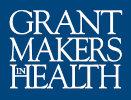The Long View: New Year, New Practices
Co-designed by the Rippel Foundation and Grantmakers In Health, this webinar featured Cassie Robinson, a futurist and philanthropic leader who works, as she describes it, in the “entanglement of what-is and what-might-be.”
Roundtable Discussion for Funders with Limited Assets
Foundations with assets less than $30 million face unique challenges as they seek to maximize their impact in the communities they serve. At this informal networking session, peers had a robust conversation around the most important issues.
CEO Working Group on Access and Coverage Call
Leaders in the field discussed the challenges this presents to states, and explore the strategies state officials and consumer advocates are designing to promote coverage retention.
The Long View: FORESIGHT in Philanthropy
In order to meet this moment, The Rippel Foundation has launched a series of informative and interactive webinars for funders. The first call in the series, was codesigned by Grantmakers In Health, and we heard from futurist Richard Lum of Vision, Foresight, Strategy. Dr. Lum led a conversation on how foundations can orient their work towards an equitable horizon, and what practices can begin to bridge to this future. Participants finished the hour with an understanding of how to assess where they are today plus how to marshal the resources and will to begin building more equitable and innovative pathways.
Legislative Opportunities to Increase Health Care Access and Coverage
This webinar discussed the key features of the American Rescue Plan Act and the Build Back Better framework—which include extending marketplace subsidies, addressing the Medicaid coverage gap, providing funding for clinics and health centers, supporting consumer assistance and enforcement, funding reinsurance and affordability programs—and discussed philanthropy’s opportunity to engage in the resulting work in communities across the country.
40 Years and Future Focused: Panel Discussion on GIH’s New Strategic Plan
Grantmakers In Health was created nearly 40 years ago. In the four decades since then, much has changed in the world related to philanthropy, policy, health care, and our understanding of health and wellness. In this session, GIH’s President and CEO Cara V. James was joined by past GIH leaders to discuss how health philanthropy has evolved, what is on the horizon, and how GIH and health funders can be more future focused to achieve better health.
Upcoming Events on Advocacy Strategies
SNAP Strategy Funder Working Group: Advocacy Opportunities
Sustainable Agriculture and Food Systems Funders and Grantmakers In Health are forming a funder Working Group for a coordinated, strategic response to the SNAP cuts in H.R. 1. The Working Group comes as an actionable response to insights shared by field leaders in a SNAP-focused webinar earlier in October.
Recognizing the far-reaching implications of SNAP for food security, health, and economic equity, this Working Group will serve as an information hub and a strategic coordination space, designed to help funders act quickly, effectively, and in alignment with one another. We will organize three Working Group meetings to start and then assess next steps.
The first call will focus on opportunities for funders to support and engage in policy advocacy to protect SNAP on a federal and state level. In addition to connecting with peers, funders will hear from Joel Berg, CEO of Hunger Free America, who will provide a policy landscape update from D.C., and Joey Hentzler, Program Manager at MAZON: A Jewish Response to Hunger, who will share about MAZON’s policy engagement and rapid response funding.
Safeguarding Medicaid and SNAP in the Wake of H.R. 1
As H.R. 1 begins to reshape the landscape of safety programs, charitable foundations face a pivotal moment. The legislation delivers sweeping tax cuts to corporations and high-income earners—while dramatically reducing funding for essential programs like Medicaid and the Supplemental Nutrition Assistance Program (SNAP). These cuts threaten the well-being of millions of families, children, and seniors, and shift the financial burden to already overstretched state and local governments.
Now more than ever, philanthropic organizations must act swiftly and strategically to mitigate harm. A key opportunity lies in supporting states as they navigate urgent administrative and implementation challenges—ensuring vulnerable populations don’t fall through the cracks.
